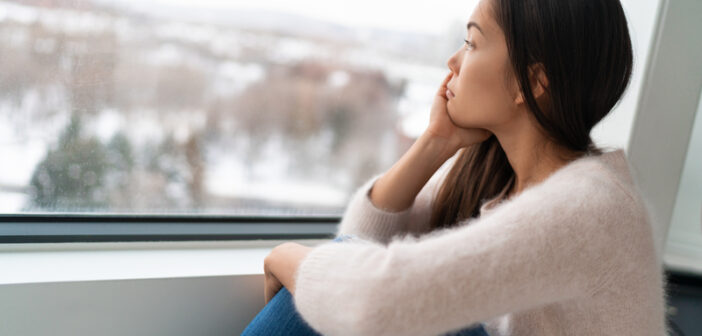 Autumn is here and winter is not far off. The days are getting shorter and there’s a definite chill in the air throughout much of the country. While some people thrive in Sweater Weather and sipping pumpkin spice lattes, for many people the autumn weather brings a sense of foreboding. While longing for warmer weather and sunny days is normal, many people struggle with seasonal depression, and may need treatment.
Autumn is here and winter is not far off. The days are getting shorter and there’s a definite chill in the air throughout much of the country. While some people thrive in Sweater Weather and sipping pumpkin spice lattes, for many people the autumn weather brings a sense of foreboding. While longing for warmer weather and sunny days is normal, many people struggle with seasonal depression, and may need treatment.
What Is Seasonal Affective Disorder?
Seasonal affective disorder (SAD) is a type of depression that peaks during the cooler, darker months of the winter and fall, and generally goes into remission during the spring and summer. Roughly 10-20% of people with major depressive disorder experience seasonal depression. Overall, about 5% of Americans experience seasonal depression.
There are certain factors that increase your risk for seasonal depression. If you’re already struggling with depression, you might find that it gets worse during the winter months. Living at a higher latitude can also increase your risk for seasonal depression, since you are experiencing longer winters and shorter days. In addition, women are more likely than men to experience SAD, and younger people are also at increased risk.
SAD and Recovery
Any underlying mental health concern can impact your recovery. When you are depressed, symptoms like fatigue and anxiety can make it hard to stick to your recovery routine. That’s amplified during the pandemic, when it can be more difficult to find meetings or attend in-person recovery events.
As with any mental health condition, it’s important to address your SAD before it has a real impact or contributes to your risk of relapse. If you have a pattern of feeling down or depressed during the winter months, formulating a plan during the fall can help you keep SAD at bay during the winter months.
Treatments for SAD
One of the primary treatments for SAD is light therapy. It’s believed that SAD is caused by lack of natural light during the winter months. Scientists don’t know exactly why, but they believe that having less daylight affects the brain and circadian rhythms, the body’s internal clock. Research shows that people with SAD make too much melatonin, the hormone that contributes to sleepiness, and have too little serotonin, a neurotransmitter that’s associated with good feelings. Having low serotonin levels is associated with an increased risk for depression.
Light therapy can help combat the lack of natural light. To try light therapy, you should use a 10,000 lux light. Sit in front of it — about 18 to 24 inches from the light source — for 20 to 30 minutes each morning. The very bright light from the lamp will help your body overcome gloomy winter mornings, and help normalize your internal clock.
Light therapy is generally considered safe, but has been linked to manic episodes in people with bipolar disorder. Talk with your doctor before starting light therapy, especially if you have bipolar disorder or a history of mania.
While light is powerful, other lifestyle changes and medical treatments can help you deal with SAD or even just navigate the winter blues. Give these a try:
- Maintain a regular sleep schedule. Getting quality sleep is essential to wellbeing, but many people find that their sleep routines are disrupted during the darker months. You might want to stay up later because of artificial lights inside, or have the urge to sleep more when the daylight is dim. Keeping a regular sleep schedule can combat these changes to your body clock. Try to go to bed and wake at roughly the same time, and aim to get 7 hours of sleep each night.
- Keep in touch with your recovery community. Some people naturally want to withdraw and “hibernate” during the winter months. This year, that urge is even more acute, since we’re all social distancing. Still, it’s healthy to keep in touch with your recovery community, even if you can only do so remotely. Commit to a standing phone call or meeting. Let people know that if you don’t show up (or call), you’ll always appreciate them checking in.
- Work with professionals. SAD and recovery aren’t conditions that you have to navigate alone. Work with professionals, including your treatment center, your counselor and your mental health provider, to craft a plan that can help make the winter months more healthy for you.
SAD can feel isolating, but there are plenty of qualified people in your recovery and medical community who can help you deal with seasonal depression.
Learn more about Oceanside Malibu at http://oceansidemalibu.com/. Reach Oceanside Malibu by phone at (866) 738-6550. Find Oceanside Malibu on Facebook.
Sponsored DISCLAIMER: This is a paid advertisement for California Behavioral Health, LLC, a CA licensed substance abuse treatment provider and not a service provided by The Fix. Calls to this number are answered by CBH, free and without obligation to the consumer. No one who answers the call receives a fee based upon the consumer’s choice to enter treatment. For additional info on other treatment providers and options visit www.samhsa.gov.




